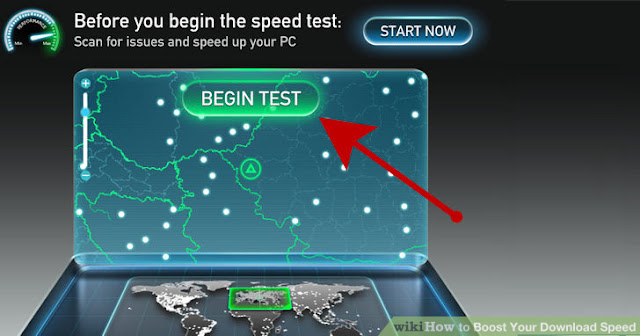How to Check Internet Speed

Checking your internet speed is helpful and a
good idea to do periodically. If you are having a problem downloading or
opening web pages, knowing how to check internet speed is handy for
troubleshooting. Keep reading for instructions on checking your speed.
Method1
From Your Computer
1.Use a PC to figure out how quickly your computer interacts with the
internet.
Before you get started, make sure your computer is connected to the
internet.
·
Go to the Start menu and search for "Network."
·
Click on "Network."
·
Click on "View status" to get information on your internet
speed.
2.Use a Mac to figure out how quickly your computer interacts with the
internet.
First, make sure your computer is connected to the internet.
·
Hit "Command" + "F".
·
Type in "Activity monitor" and double click on the
application.
·
Click on the Network tab to get information on your peak speed.
Method2
From the Internet
1.Close all applications before running the speed test.
You don't want sluggish applications interfering with the measurement of
your internet speed. Make sure your internet is connected.
2.Go online and do a search for "internet speed tests."
You will find a number of sources
from which to pick.
·
Pick just a few to run their tests. Most of the speed test sites will
sell something. That in itself is not a big deal. But if you have to wade
through offers and prompts to test your PC first before you can run the simple
speed test, go to a different website.
·
You will find Speakeasy and PC Pitstop to have selectable test
destinations. This is good because you can test from both sites to the same
city, and compare the results. Don't expect them to be exact, but you can get a
good average.
3.If prompted, select a sever that is closest to your location.
That way proximity to server won't be on the shortlist of possible
reasons why your internet is running at lower speeds.
4.Compare your internet speed to the averages.
Compare how fast your internet is running to typical speeds for your
type of internet.
·
Dial-up modem: 10 to 40 kB/sec.
·
DSL or cable: 500 kB/sec.
·
T-1: 1000+ kB/sec.
5.Run internet speed tests to help determine whether you are having a
problem, or just to keep your internet service provider honest.
·
Internet speed test results will vary from one tester to another. There
are many reasons for this; distance and metrics to the test server are two
major ones. Often, you will have no idea where the test destination is, so keep
this in mind. Some tests let you choose the location to test to. Normally, the
best test to run is to the server location nearest you. This is because you are
trying to test your connection and know that your PC/connection is OK.
·
Remember there isn't a need to call your ISP if your speed isn't exactly
what your service agreement says you have. All service varies somewhat from
what's on paper. There are numerous aspects that affect internet speed. The
speed of your home connection might well vary from one day to the next, and
even throughout the day.
6.Call your ISP if you do believe that you have a service problem.
·
It is not only their responsibility to you, but it is their equipment.
They are entitled and obligated to determine speed problems for themselves.








0 comments:
Post a Comment